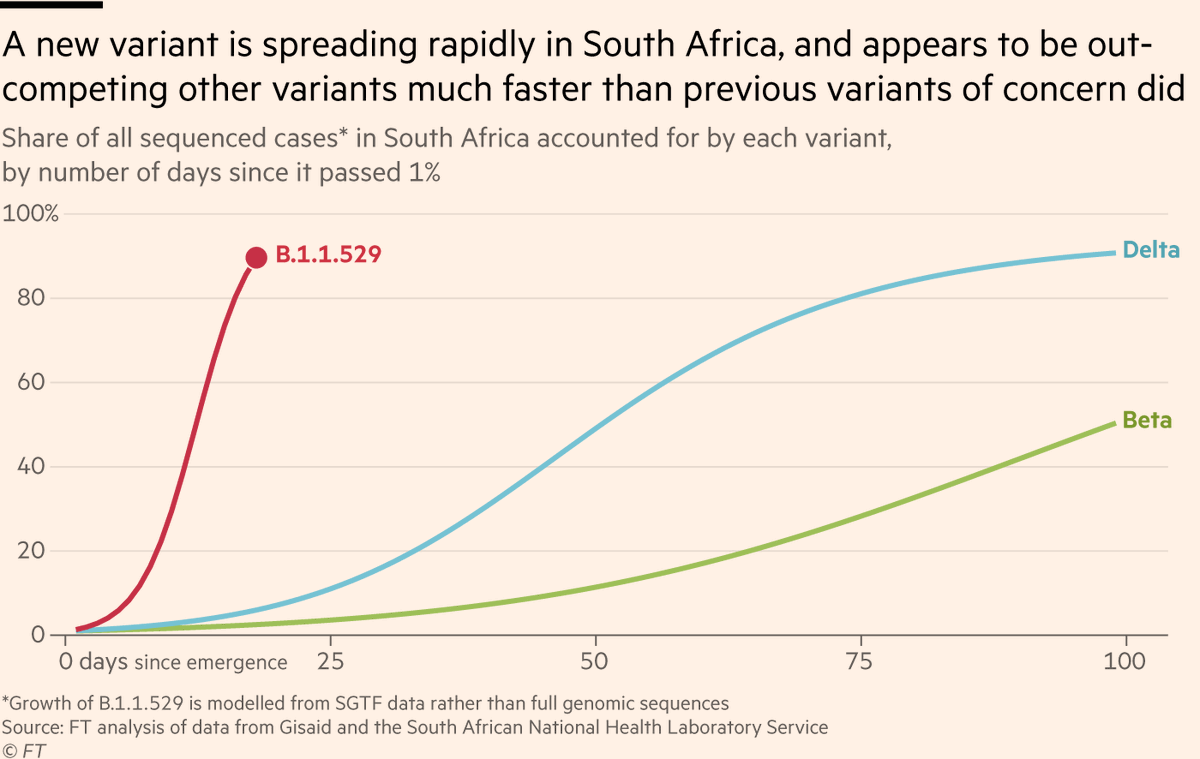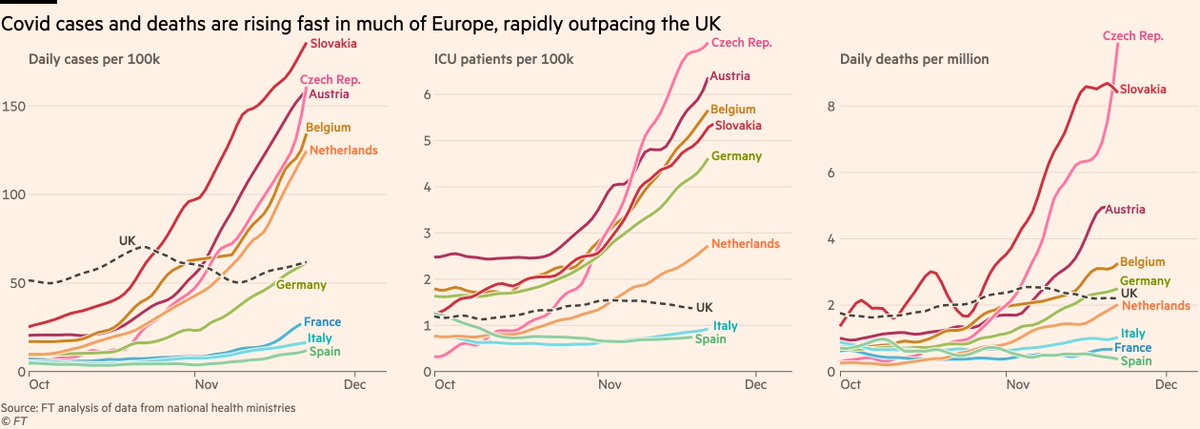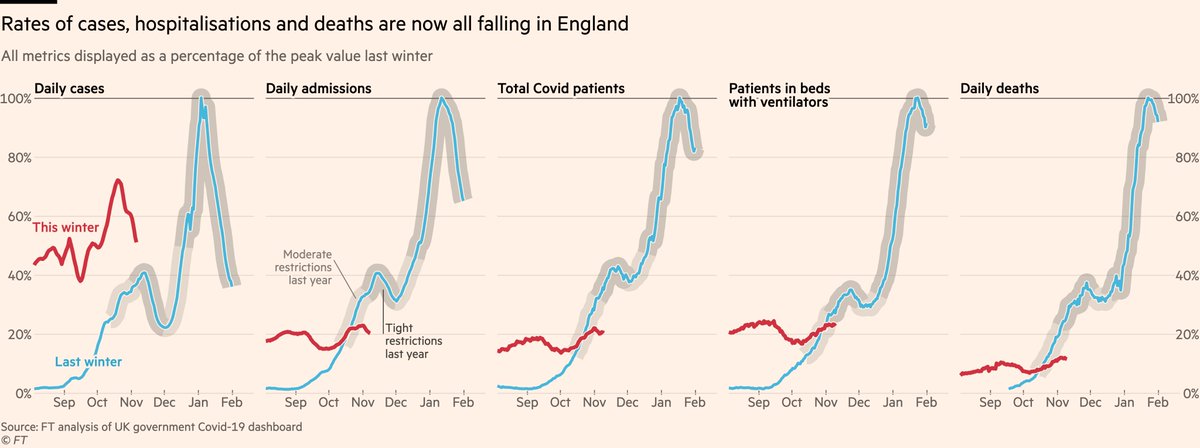
NEW: we know cases rising fast in South Africa, but what about severe outcomes?
I spent yesterday pulling together hospitalisations for Gauteng province, so we can compare the fledging Omicron wave to those that preceded it.
So far admissions following ~same path as past waves.
I spent yesterday pulling together hospitalisations for Gauteng province, so we can compare the fledging Omicron wave to those that preceded it.
So far admissions following ~same path as past waves.

Quick notes (1/2):
• For cases to be rising faster while admissions are on same pace may hint at a lower proportion of severe disease
• But this may also simply be the result of more infection-acquired immunity and vax
• Or of cases so far being predominantly younger people
• For cases to be rising faster while admissions are on same pace may hint at a lower proportion of severe disease
• But this may also simply be the result of more infection-acquired immunity and vax
• Or of cases so far being predominantly younger people
And 2/2:
• Share of patients in ICU currently much lower than same stage of Delta wave, but may change if cases spread from being mainly young. Or may not, which would suggest T and B cells kicking in 🤞
• Please follow people on the ground incl @Tuliodna @tomtom_m @rjlessells
• Share of patients in ICU currently much lower than same stage of Delta wave, but may change if cases spread from being mainly young. Or may not, which would suggest T and B cells kicking in 🤞
• Please follow people on the ground incl @Tuliodna @tomtom_m @rjlessells
Our story on the latest from South Africa, by @mroliverbarnes, @jsphctrl and me: ft.com/content/c719bc…
Couple more footnotes:
• I have the data on patient numbers too, though it's messier because the number of hospitals that report data can change from day to day. So far it shows broadly similar pattern to admissions — I'll share this shortly when I've cleaned it a bit more
• I have the data on patient numbers too, though it's messier because the number of hospitals that report data can change from day to day. So far it shows broadly similar pattern to admissions — I'll share this shortly when I've cleaned it a bit more
• Enormous credit to the team at @nicd_sa who painstakingly gather this data every day. As with the discovery of Omicron, we owe everything we know on this to the in-country teams
• • •
Missing some Tweet in this thread? You can try to
force a refresh


















